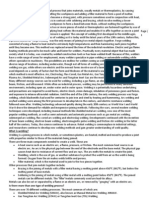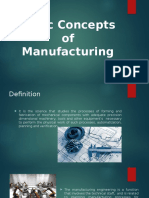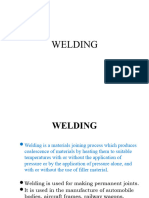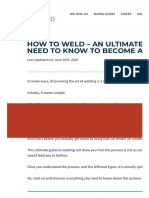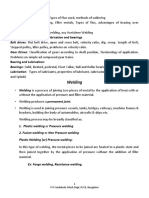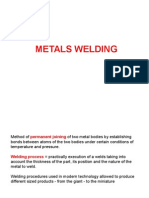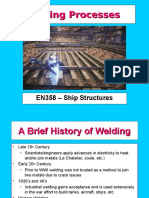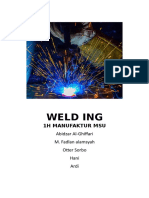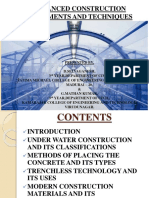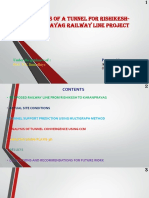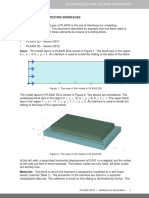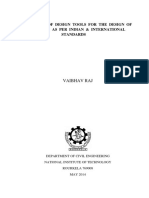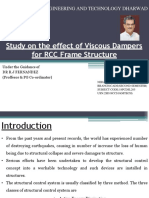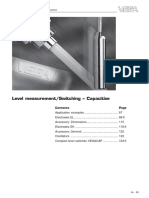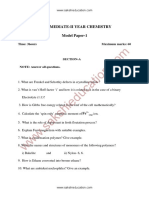0% found this document useful (0 votes)
45 views3 pagesWelding Metallurgy I Intro
The Welding Metallurgy course, prepared by Engr. Bunmi Onasola, covers essential topics such as definitions, background knowledge in chemistry and material science, and various welding methods and techniques. It highlights the importance of metallurgy and welding processes, including fusion welding, pressure welding, and liquid metal filler welding. The course assessment consists of attendance, assignments, class tests, and examinations, with a focus on understanding the science behind metal joining techniques.
Uploaded by
awedavid857Copyright
© © All Rights Reserved
We take content rights seriously. If you suspect this is your content, claim it here.
Available Formats
Download as PDF, TXT or read online on Scribd
0% found this document useful (0 votes)
45 views3 pagesWelding Metallurgy I Intro
The Welding Metallurgy course, prepared by Engr. Bunmi Onasola, covers essential topics such as definitions, background knowledge in chemistry and material science, and various welding methods and techniques. It highlights the importance of metallurgy and welding processes, including fusion welding, pressure welding, and liquid metal filler welding. The course assessment consists of attendance, assignments, class tests, and examinations, with a focus on understanding the science behind metal joining techniques.
Uploaded by
awedavid857Copyright
© © All Rights Reserved
We take content rights seriously. If you suspect this is your content, claim it here.
Available Formats
Download as PDF, TXT or read online on Scribd
/ 3


